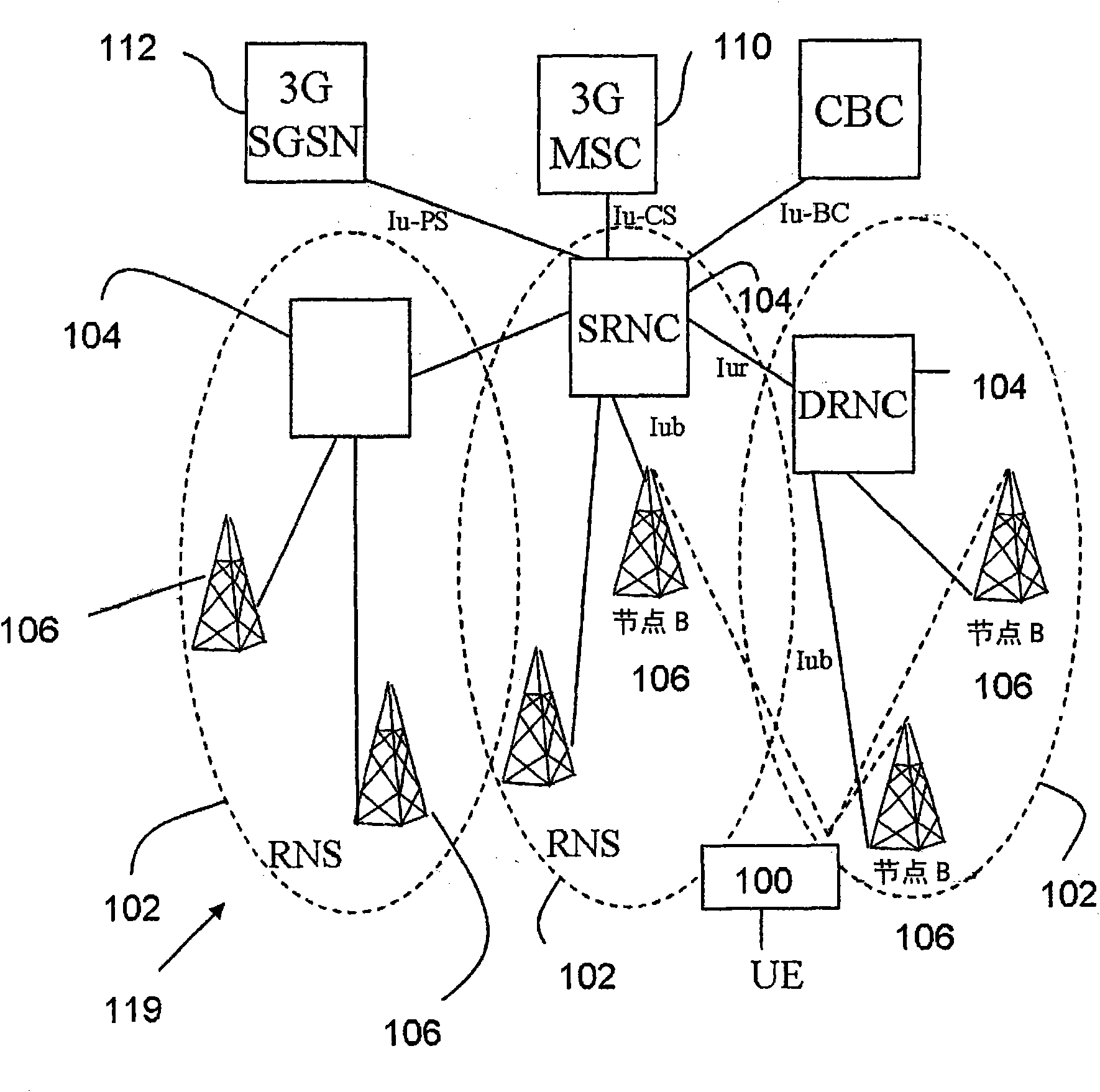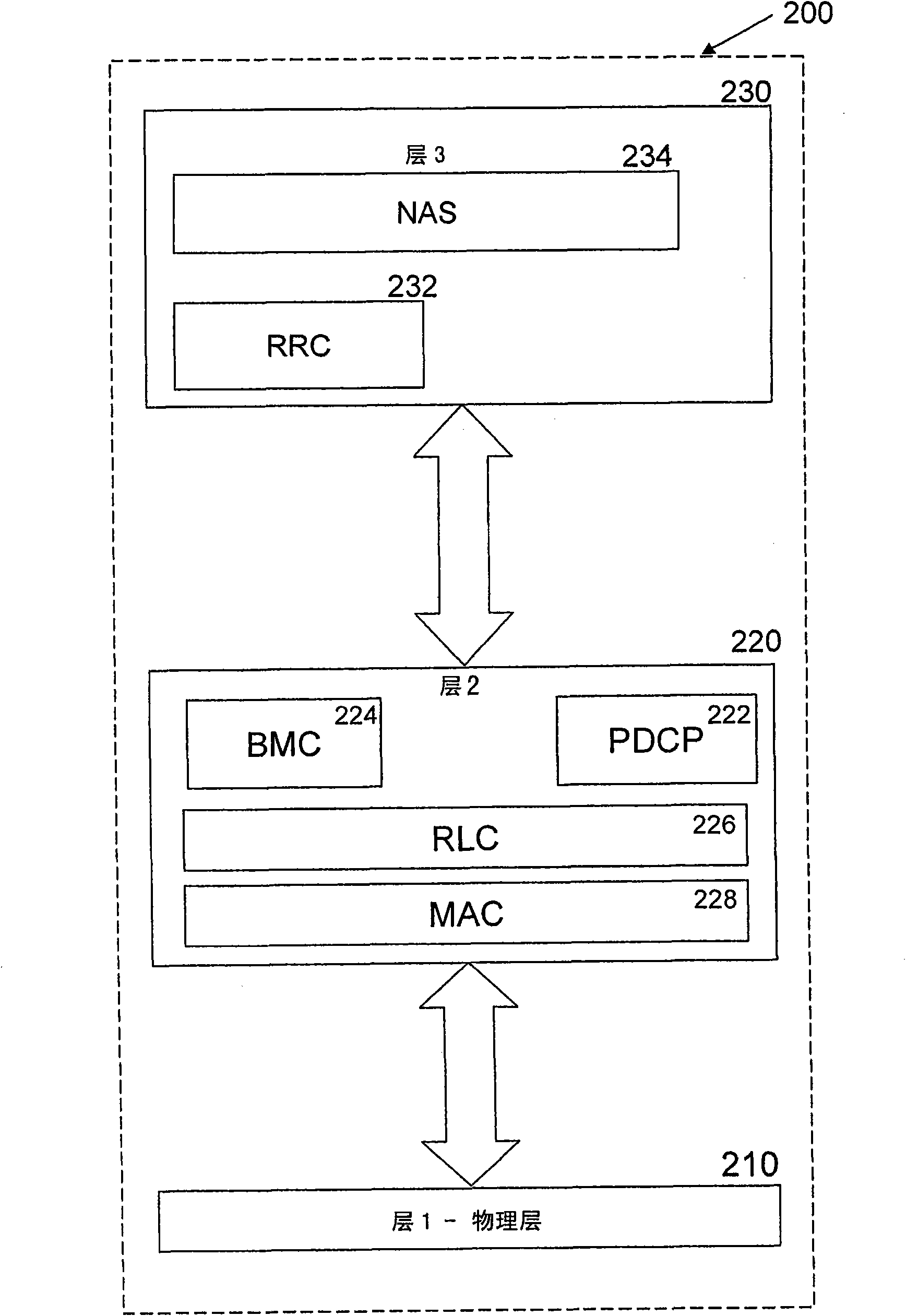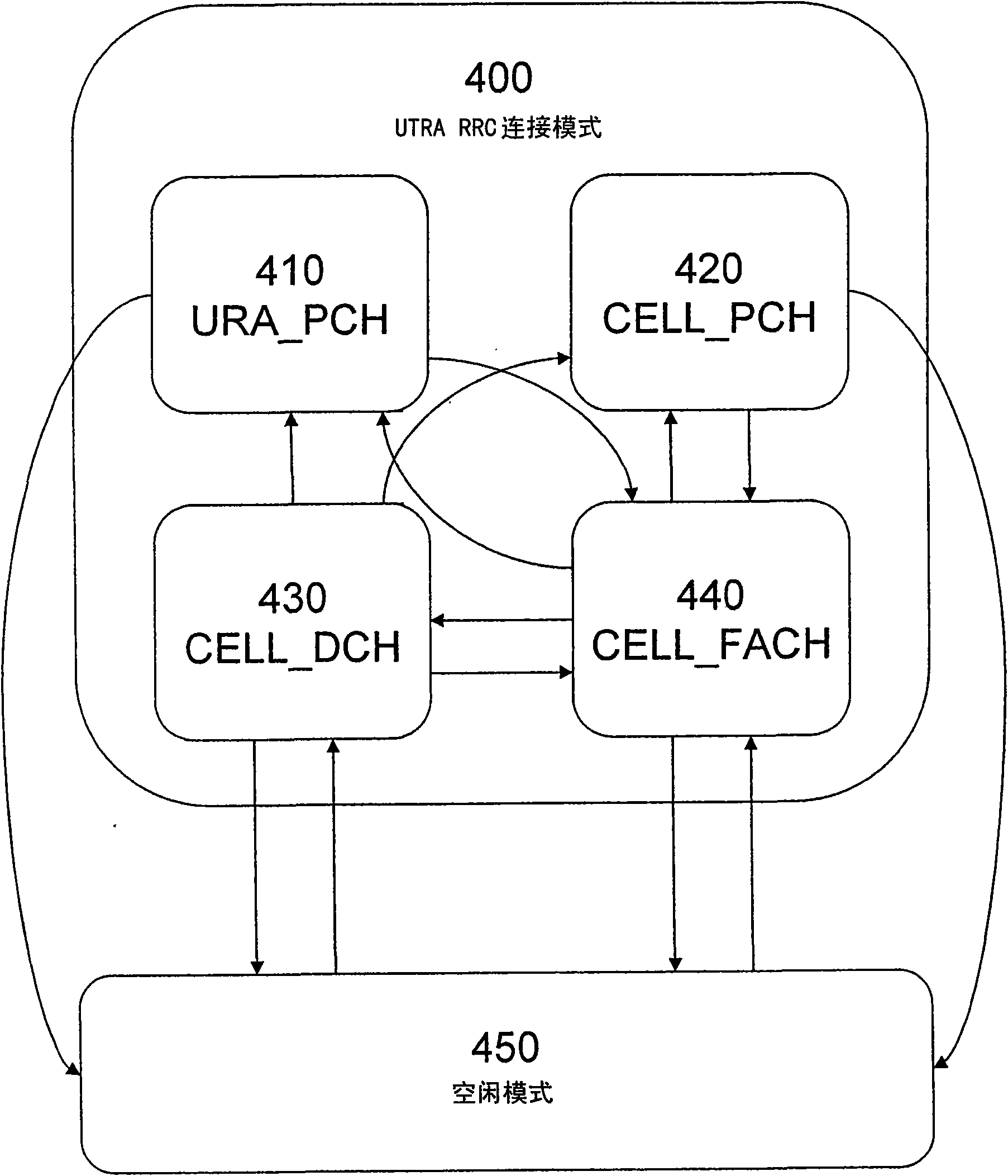A method and apparatus having improved handling of state transitions
A state and communication state technology, applied in the fields of computer programs, wireless communication networks, and computer program products, can solve the problems of impossible communication, consumption of wireless resources and battery resources, etc.
- Summary
- Abstract
- Description
- Claims
- Application Information
AI Technical Summary
Problems solved by technology
Method used
Image
Examples
Embodiment Construction
[0032] According to the scheme described here, it is recognized that a third generation wireless communication device, when moving from a paging state (such as URA_PCH or CELL_PCH) to CELL_FACH in order to perform a CELL or URA update procedure, will generally try to check the stored radio bearers of SRBs 1 to 4 information, and moves to the idle (IDLE) state if the check fails.
[0033] Correspondingly, the requirement to check the radio bearer mapping information of SRB1-4 in CELL_PCH / URA_PCH is changed so that the UE is not required to perform any of the checks mentioned in section 8.5.21 in this specific case. While performing the CELL update procedure in the CELL_PCH or URA_PCH state or the URA update procedure in the URA_PCH state, the UE transitions to the CELL_FACH state and then sends a cell update / URA update (CELLUPDATE / URA UPDATE) on SRB0.
[0034] If SRB1 does not have FACH mapping, the UTRAN will send a Cell Update Confirm / URA Update Confirm (CELL UPDATE CONFIRM / U...
PUM
 Login to View More
Login to View More Abstract
Description
Claims
Application Information
 Login to View More
Login to View More - R&D
- Intellectual Property
- Life Sciences
- Materials
- Tech Scout
- Unparalleled Data Quality
- Higher Quality Content
- 60% Fewer Hallucinations
Browse by: Latest US Patents, China's latest patents, Technical Efficacy Thesaurus, Application Domain, Technology Topic, Popular Technical Reports.
© 2025 PatSnap. All rights reserved.Legal|Privacy policy|Modern Slavery Act Transparency Statement|Sitemap|About US| Contact US: help@patsnap.com



